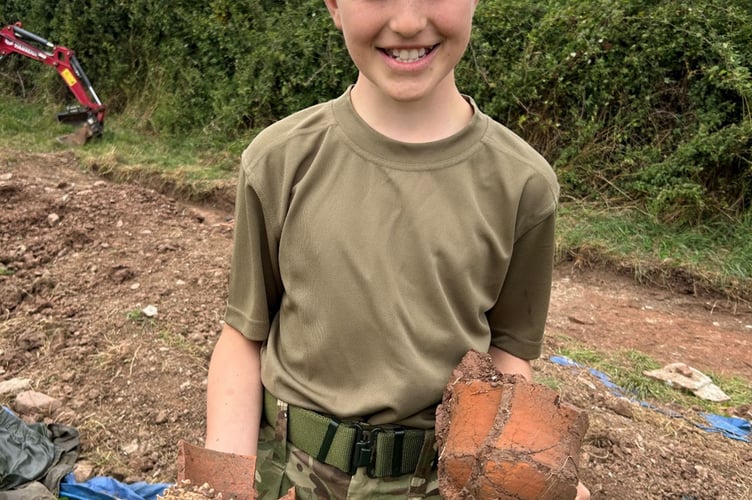An ancient hillfort, possibly dating back almost two thousand years, has been uncovered in the Forest of Dean by Army Cadets working alongside archaeologists from the Royal Agricultural University (RAU).
During a weekend dig at the site near Newnham where an anomaly in the ground has previously been seen in aerial imagery, the cadets learnt how to position trenches using navigational skills alongside drone mapping techniques and geophysical surveys.

Two trenches were opened, with equipment kindly loaned by Moat Contracting in Newent, before the cadets, from C Company Gloucestershire Army Cadet Force, and students from the Royal Agricultural University completed the excavation by hand unearthing more than 650 artefacts including significant amounts of Roman pottery and some bones as well as material from the Iron Age.
Although these artefacts have yet to be properly analysed and professionally dated, it is thought that they come from the Severn Valley, as well as Dorset and Oxford, and could date from as long ago as 150AD. A piece of stone archway was also found indicating a significant structure was present in the vicinity.
Professor Mark Horton, Pro Vice-Chancellor, Research and Enterprise at the RAU, said: “An aerial photo of the site which showed certain features has long intrigued local historians and archaeologists with no clear consensus as to whether it was natural geology or evidence for a man-made structure.
“We are now able to show that this was likely to be a site occupied over a significant period of time, with finds from the late Iron Age and mid-2nd century, with more than 650 finds of pottery, bone, and iron slag.
“The features revealed by the dig included two ditches. One was more than two metres deep and had been cut through bedrock, while the second was shallower with laid pavements on either side. This ditch contained a dog jaw and wild boar tooth which may have been placed there deliberately.”
Cadet Corporal Joshua Fearon, age 15 from Lydney Platoon said: “I really enjoyed the dig as I’m interested in history. This hands-on experience taught me a lot about the Romans in the Forest of Dean and how other camps could have been set up in the area.
“Professor Horton was very helpful and knowledgeable; he was able to explain the different types of pottery we managed to find and their significance.”
Sgt Instructor Ben Trimble, Lydney Army Cadet Force Detachment Commander, added: “We always welcome opportunities to support our local community and are always willing to challenge ourselves and step up with courage to new things.
“Our cadets relished the chance to participate in the dig and learned many new skills along the way including about the scientific methods that are used to understand the past. All the cadets thoroughly enjoyed the weekend and hope to enjoy more archaeology in the future.”
Following the excavations, the trenches have now been backfilled and the work of analysing the findings has begun. A report on the project will be submitted to the Historic Environment Record and the team hopes to return next year to undertake further investigations.
The Royal Agricultural University and C Company Gloucestershire Army Cadet Force are very grateful to Moat Contracting in Newent which loaned the equipment for the dig excavation.
The Royal Agricultural University (RAU), the first agricultural college in the English-speaking world, has been at the forefront of agricultural education, research, and innovation since 1845. Today, it has around 1,100 undergraduate and postgraduate students from more than 46 countries studying subjects ranging from agriculture, land management, and rural policy, to sustainable food systems, cultural heritage, business and entrepreneurship, and equine science, at its Cirencester campus.




